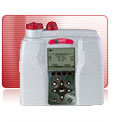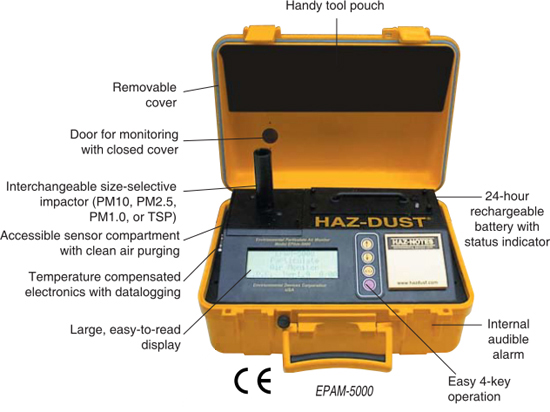Indoor air quality monitoring:
Particulate and air quality monitoring in one instrument.
It offers the unique capability to simultaneously measure particulates (mass concentration), volatile organic compounds (VOCs), toxic gas, carbon dioxide (CO2), relative humidity, temperature and air velocity (with optional accessory).
Key Features
Simultaneously Measure Particulate and Gas Concentrations
- Reduces the need for multiple instruments
- Lowers the cost of ownership.
90° Light Scattering Photometer
- Mass concentration engine offers real-time measurement of particulates.
Built in Sampling Pump for Gravimetric Analysis
- Allows user to insert a 25 or 37 mm filter cassette to capture particulates for laboratory testing.
Dial-in Rotary Impactor
- Twist and click selection of particulate settings: PM2.5, PM4, PM10 or TSP*

Outdoor air quality monitoring:
The EPAM-5000 is a portable microprocessor-based particulate monitor suitable for ambient, environmental, and indoor air quality investigations. Highly sensitive, this monitor uses light scattering to measure particle concentration and provide immediate real-time determinations and data recordings of airborne particle concentration in milligrams per cubic meter (mg/m3).
Interchangeable size-selective sampling heads allow PM10, PM2.5, PM1.0, or TSP monitoring. The unique aerodynamic particle sizing and optional 47-mm in-line filter holder loaded with an appropriate filter can provide concurrent gravimetric sampling. Sampling data can be downloaded to and stored on a PC for analysis and report generation using DustComm Pro Software (included).
Main Applications:
- Quantifying off-site particulate migration
- Surveying for PM2.5 and PM10
- Monitoring dust generation during drilling and excavation
- Evaluating dust suppression and engineering controls
- Locating and identifying "hot spots"
- Emergency response and fugitive emissions compliance
- Determining level of respiratory protection
- Survey of workplace for OSHA/EPA compliance
- Evaluating worker exposure to airborne contaminants
- Dust collector/ventilation system checks
- Monitoring lung-damaging particles in factories and buildings

